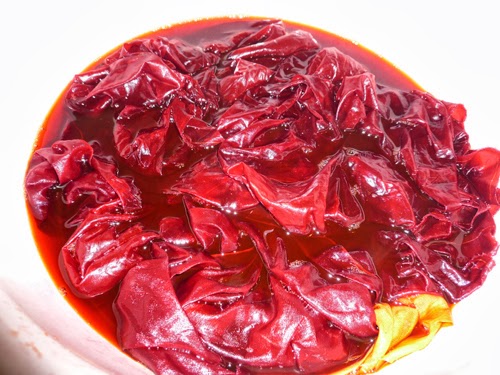Process of Natural dyeing and Patchwork - Wall clock and Passport case
Material : 100% silk (Dupioni Organza)
gardenia seeds, indigo leaf, dried indigo leaf powder
The
Silk Dupioni Organza that I use is very good to do natural dyeing. It is woven by cocoons 100% so the result of dyeing with most of vegetables is pretty nicer than cotton or wool. When I was doing work, my friend gave me Indigo Leaf so I decided to do natural dyeing with that pushing the work I was doing back. Then the color came out satisfactorily so I started making a passport case and a clock.The passport case is made by Silk used Indigo Leaf and Dried Indigo Lear Powder, and Gardenia seed silk was added for the clock.
Silk Dupioni Organza have different feel with existing fabric in comparison bacause it has feeling like paper.
Process of Indigo Leaf Dyeing
The process of dyeing wasn't taken photo, so here I descript cover for it.
1. Wash the Indigo Leaf for removing soil.
2. Grind it.
3. Prepare three vats of cold water. Would be better colder
and colder.
4. Put step2 to a net and soak it to one of vats. Knead the
net while it's in the water to extract dyeing solution.
5. Put the squeezed net into the second vat of cold water
and squeeze the net again.
6. Do the same work in the third water once again.
7. Mix the water(dyeing solution) of three vats.
8. Spread a fabric well, put it into water by step7
and knead the fabric for 25 mins.
9. Prepare ice water for putting the dyed fabric into there.
The fabric should be rinsed.
10. Squize the fabric softly and dry it in a cool place.
Process of Indigo leaf powder Dyeing
I have dyed using of Indian Indigo Leaf Powder
1. A few days ago of dyeing, powder should be dissolved in water(ph11).
I used Natural Lime Powder instead Casutic Soda.
2. Skim off foam if the water of step1 have it and warm the water temperature up to 40 degrees.
3. Put Hydrosulphide into a little water and dissolve it.
4. Put the water of step3 into step2's water and leave it (do not stir) for an hour.
Then it comes out like light green color.
5. Soak a fabric in water step4 and knead it for 10 minutes in water.
The fabric must be soaked deeply to prevent stain as the fabric meet air.
6. Squeeze the fabric gently and spread it out in shade.
7. When it is dried, put the dyed fabric in water for 1~2days to remove alkali completely.
Process of Gardenia Dyeing
Check a linked page about Gardenia Dyeing Process.
go to the page about Gardenia Dyeing
The Indigo leaf dyeing was more interesting for me than Indigo powder dyeing because I usually don't like using chemical fixative for natural dye. For dyeing with Indigo leaf, don't need to use chemical fixative. If you want to dye with Indigo powder using natural dyestuff perfectly, the process will be much more complicated.
Finally Making is started!
I started making clock with
Silk Dupioni Organza which was given from the process of dyeing above. Actually the clock was designed for hand dyeing(chemical) but I was curious that how comes it out with
Silk Dupioni Organza by natural dyeing. So I chose three materials as close with chemical dyeing as possible but the dyeing work was much harder and longer than what I expected.
I used a clock case and hands of a clock which are good at patchwork fabric,
and fixed clock movement. I did hand sewing like a photo below to make it exquisitely.
The nails were used for the dial of a clock. As I already mentioned,
Silk Dupioni Organza which is stiff and crisp looks simple and modern but it is quite harder than cotton to sew by hand or machine.
Last step was covering the clock with a glass case.
The other one was making a passport case. When I was thinking about what I can do with remaining fabrics from the clock making, my passport jumped to my eyes.
Silk Dupioni Organza is a see-through fabric so the passport can be seen. It doesn't need to be covered off at an immigration checkpoint.
I did work with dyed silk, blue color(Indigo Leaf) and deep blue color(Indigo Powder).
It was also made by hand sewing, the fabrics were very thin and slippery so sewing was not easy. Even though the sewing is not good but the silk is well mended fabric. So when the work is done, you can see the cover is better than you thought before it was finished.
I, who likes travel, has two passports. :) The name of a country on front can be seen like below so it doesn't have problem with the cover when you pass the Immigration.
I mostly dye and draw on silk, (these days especially Dupioni Organza), but I make variety things by sewing to be refreshed from time to time. I could get totally different works from silk because it's stiff or paperlike feature compare with cotton patchwork like quilt.






















































